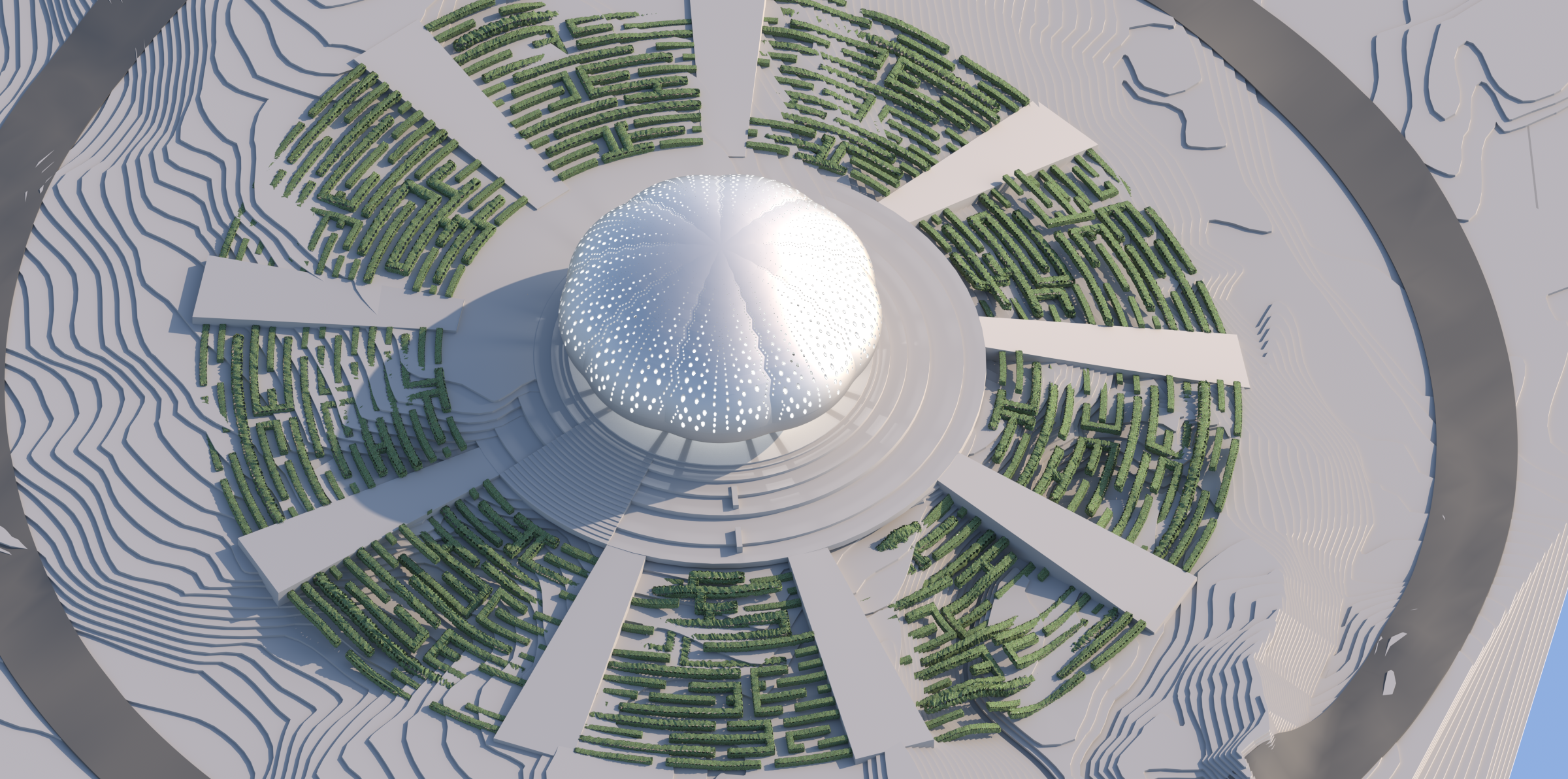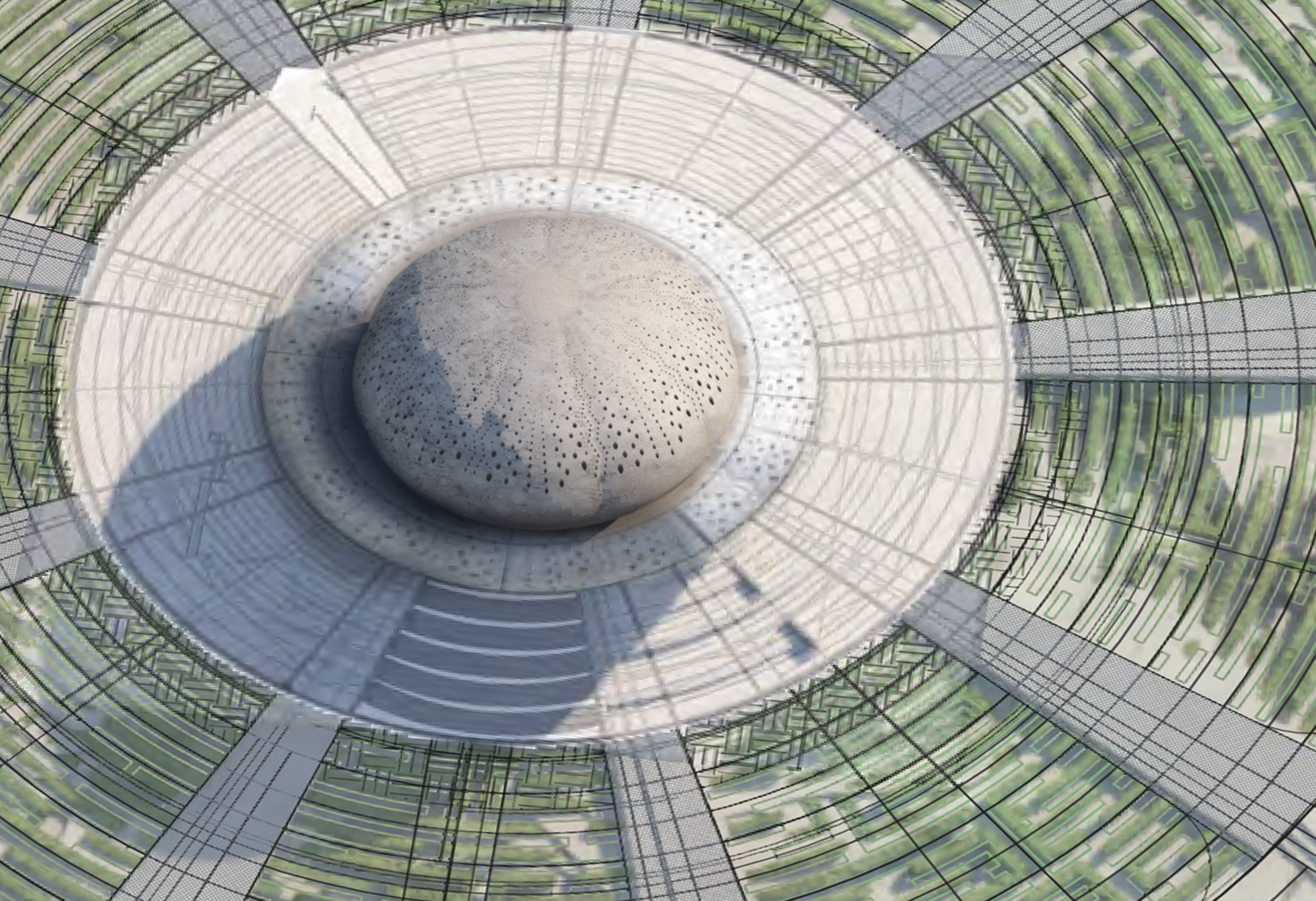'Baha'i Temple' Papua New Guinea, Competition
Baha’i Temple, Papua New Guinea,
Nine entrances and nine pathways leading outwards and nine gardens
Baha’i Temple, Papua New Guinea, competition
Location: Port Moresby, Papua New Guinea
Program: Place of worship
This project was a proposal submitted to a competition for the design of a Baha’i Temple in Papua New Guinea.
As required by the Baha’i Faith, this proposed House of Worship is a nine sided structure based on a geometry of nine meter concentric circles. The central domelike interior space faces Northeast towards Bahjí, in honor of Bahá’u’lláh. The dome itself is inspired by the organic form of sea shells, particularly that of the sea urchin. The design of the shell takes on the geometry of the 9 axis structure, and its perforations for light and air are organized in a continuous pattern over the entire curved surface.
Mashriqu’l-Adhkar, which is Arabic for “The Dawning Place of the Mention of God”, and
they are not simply buildings, but are considered sacred institutions.
The main area inside the dome serves as an interstitial space between the administrative spaces and the mezzanine. The outer circle encompasses large secondary gathering spaces, which still receive natural light through glass walls and cutouts in the ground plane. There is also a library located in the center of the dome, below the open space, which expands the activities of the building.
The dome is constructed with a white titanium dioxide blend concrete, which provides a smooth white finish, and acts as a photocatalyst to convert the sun’s UV rays into chemical energy.
This reinforced concrete building also uses local wood to create its structural form, and the design for many small apertures as windows provides ample light, as well as some natural air ventilation.
Principal-Lead Designer: Farnaz Mansuri









